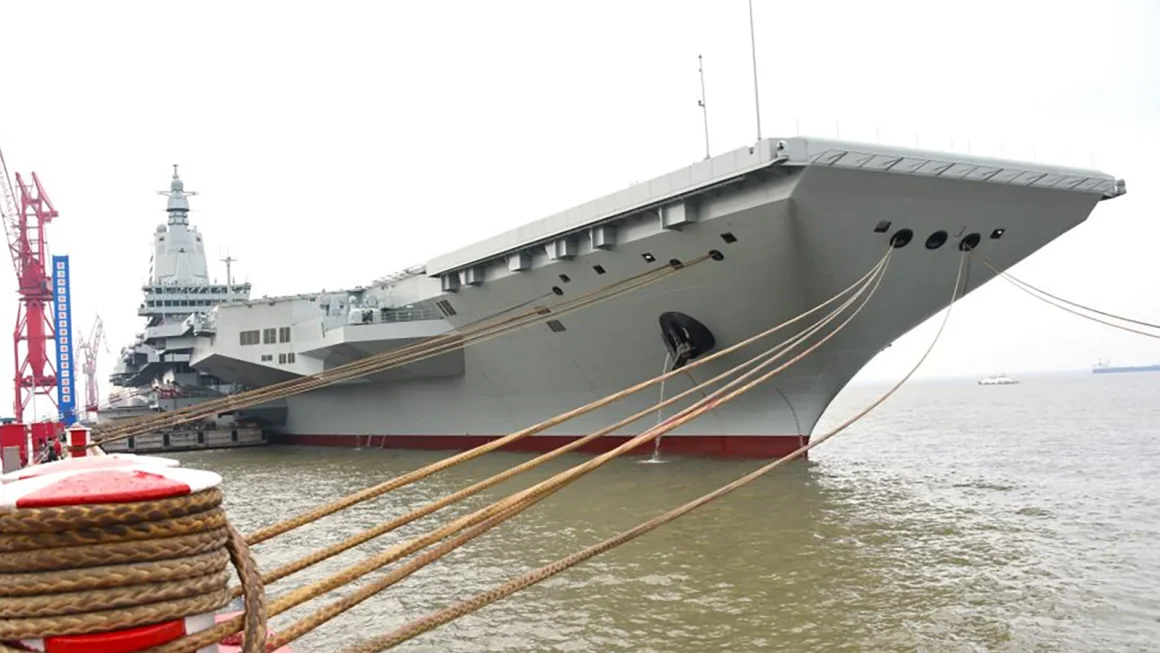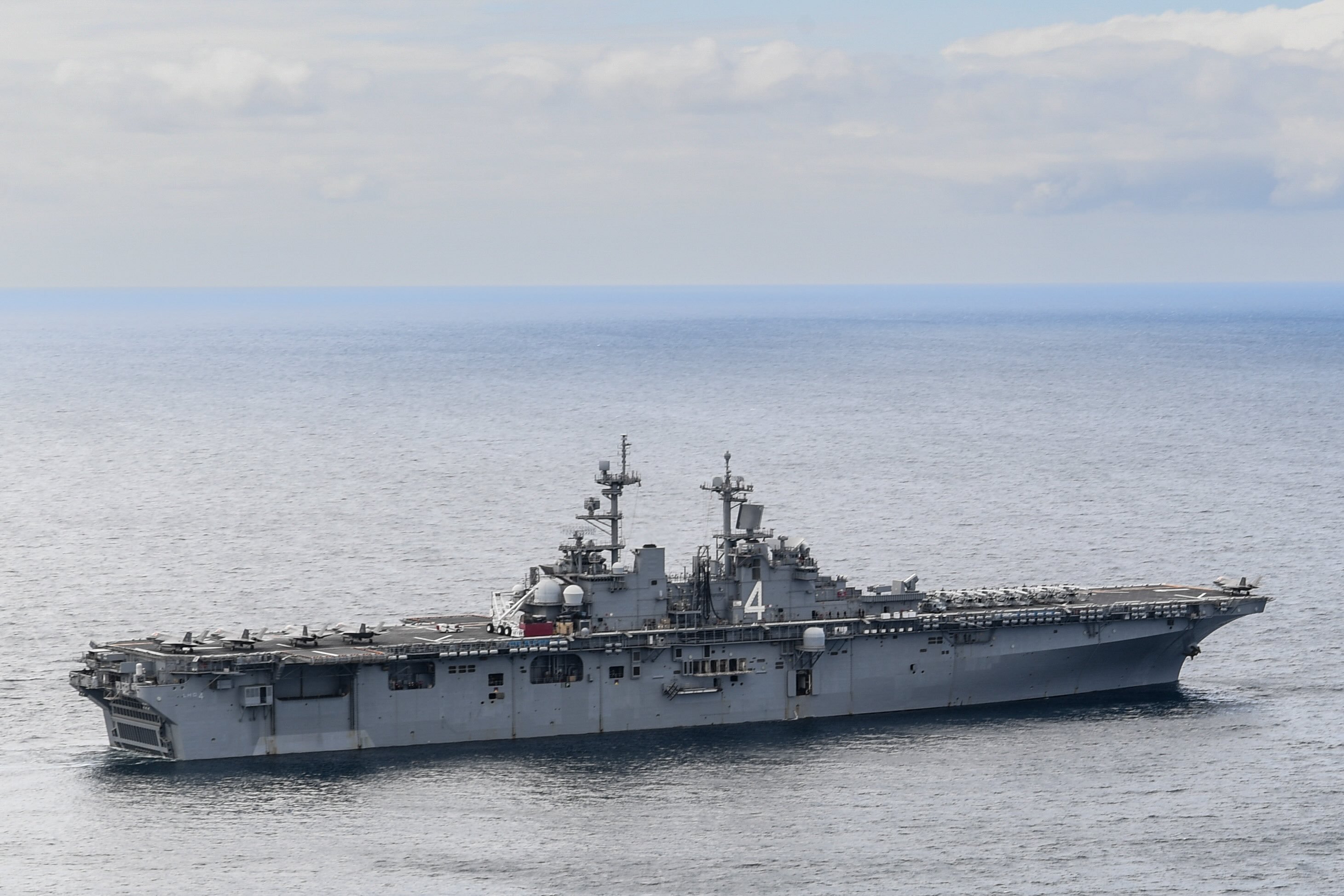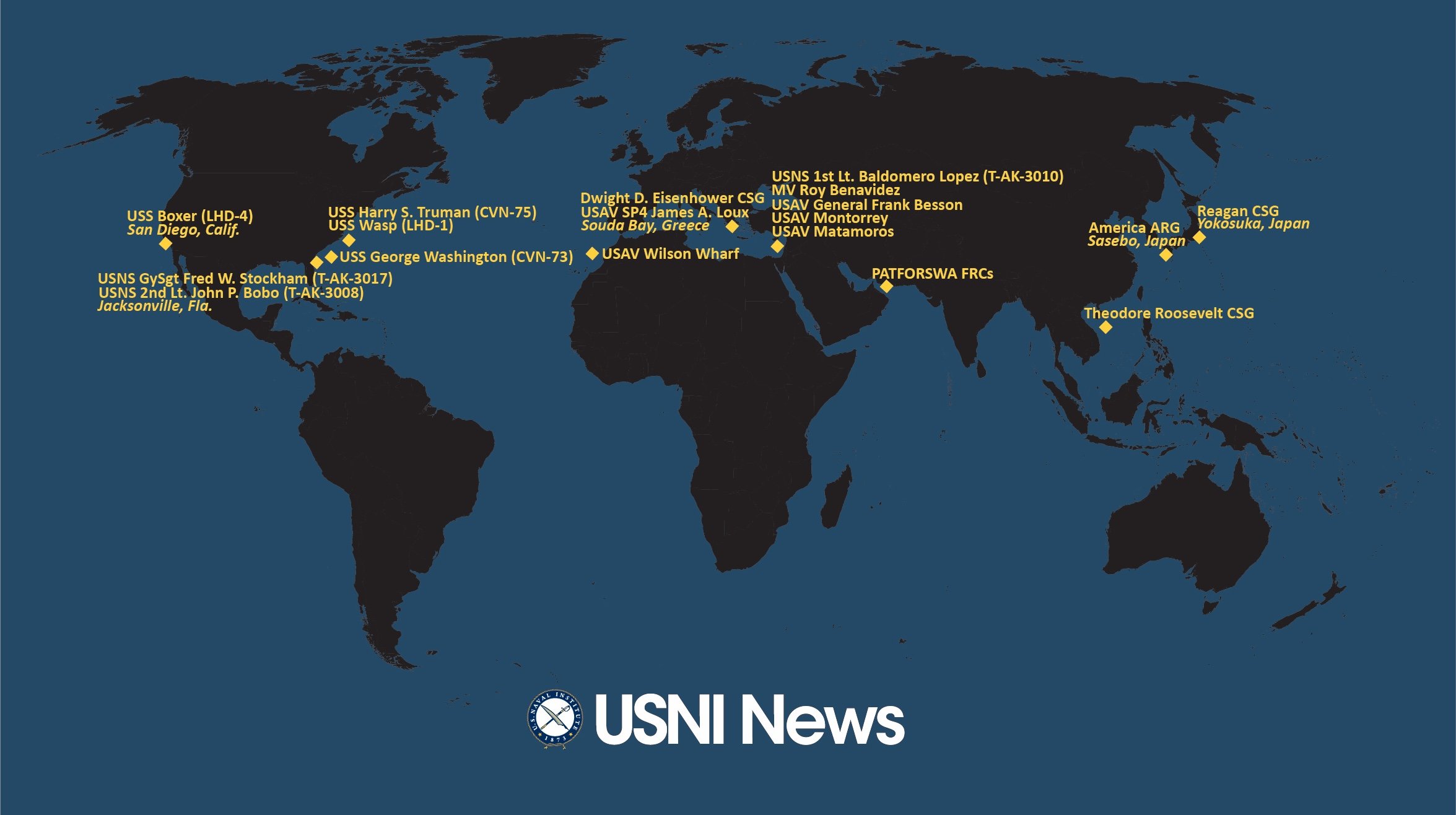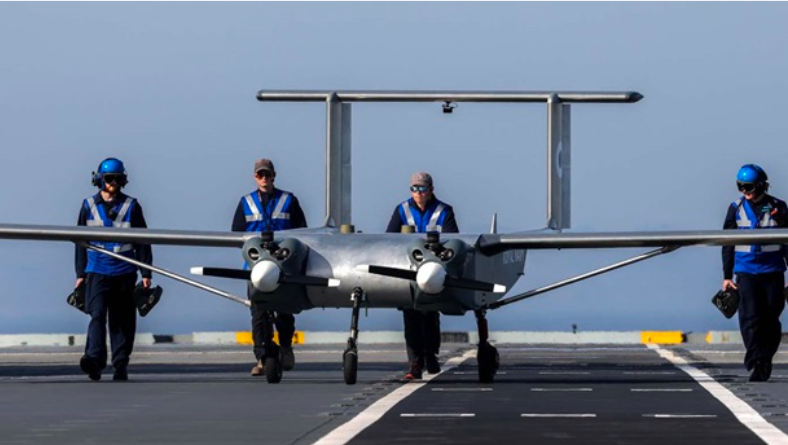
A drone took off from and landed on a British warship for the first time during HMS Prince of Wales’ (R09) autumn deployment, which will see the Queen Elizabeth–class aircraft carrier assemble its air wing off the U.S. East Coast.
After a 20-minute flight from Royal Naval Air Station Culdrose, Britain’s first-ever carrier drone landing delivered a payload of naval memorabilia for Prince of Wales’ crew. The HCMC drone, made by W Autonomous Systems, flew to Prince of Wales while the aircraft carrier was transiting the English Channel in its first of many tests expected during the carrier’s autumn deployment. While the carrier previously operated other unmanned systems, such as quadcopters and target drones, the Royal Navy stated that these tests “are in a different league.”
Capt. Richard Hewitt, commander of Prince of Wales, highlighted what this first marked for British naval aviation, stating: “HMS Prince of Wales is a fifth-generation aircraft carrier and operating autonomous drones like this will become the norm across future Royal Navy carrier strike groups in our 50-year lifespan.”
According to W Autonomous Systems, its short take off and landing (STOL) HCMC drone can deliver a payload of 100 kg over 1,000 km to “remote or difficult locations.” The Royal Navy is examining this capability for the delivery of supplies and spare parts between warships of the U.K. carrier strike group. The Royal Navy emphasized that using drones like HCMC is cheaper and safer than traditional methods of delivery, while also freeing up the Fleet Air Arm’s helicopters for other missions, such as antisubmarine warfare duties.
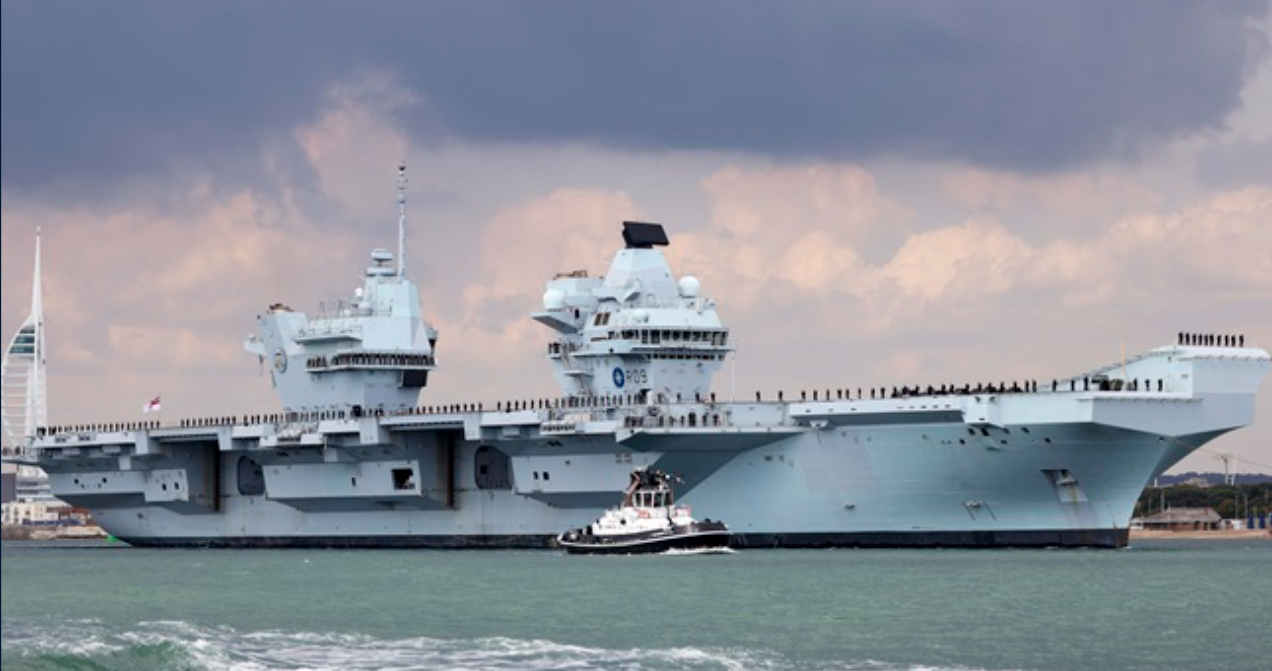
“The goal is to deploy drones with a U.K. Carrier Strike Group in the future, using them to transfer stores and supplies – such as mail or spare parts – between ships, without the need to launch helicopters,” reads a statement from the service.
Prince of Wales departed Portsmouth last week for its long-awaited training on the U.S. Eastern Seaboard. In 2022, the carrier’s propulsion systems failed shortly after Prince of Wales departed for the United States. As a result of this failure, sistership HMS Queen Elizabeth (R08) took over parts of its deployment, including a new course for the U.S. East Coast. Prince of Wales was in drydock for repairs until July of this year.
Roughly a year later, Prince of Wales is finally on its way to the United States. Expected activities include the embarkation of F-35B Lightning IIs for further testing and qualifications, V-22 Osprey operations, and trials of the General Atomics Mojave STOL drone.
“My team are really excited to tackle the final phase of testing which will expand the F-35’s awesome capabilities even more – and to be the first to land and launch new types of drones on our deck. The deck team are ready and raring to go,” said Martin Russell, commander of Prince of Wales’ air group and flight deck operations.
The U.K. carrier landing comes almost ten years after an unmanned aircraft made the first arrested landing aboard a U.S. aircraft carrier. A Northrop Grumman X-47B, call sign Salty Dog 502, landed aboard USS George H.W. Bush (CVN-77) on July 10, 2013.


